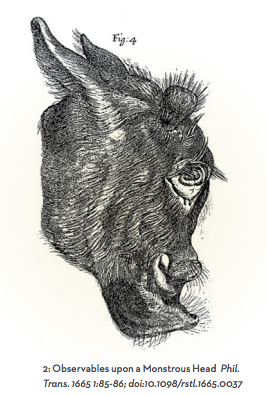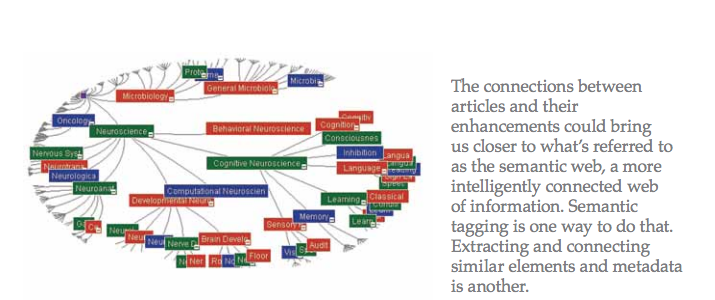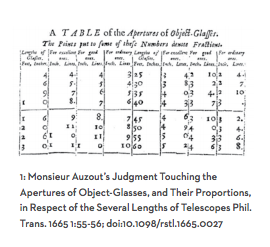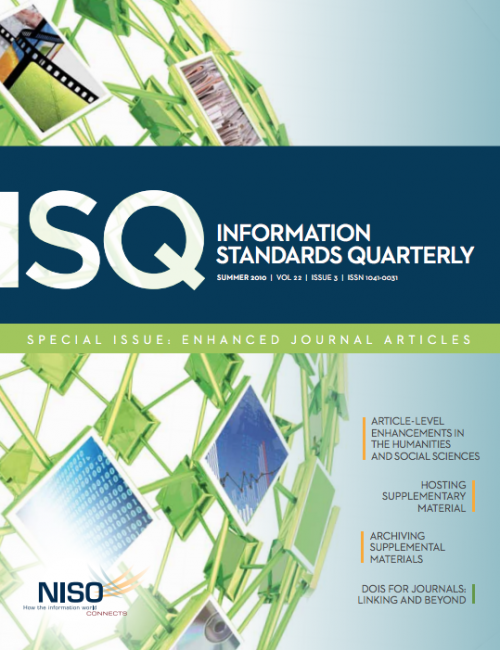Letter from the Editor
Kristen Fisher Ratan | Assistant Director, Business Strategy | Highwire Press

NOTE TO READER: Download the PDF of this issue.
Scholarly publishing started in 1665 with the Royal Society’s Philosophical Transactions. The earliest articles were reprinted letters between scientists. In those early days, articles were primarily text, only occasionally enhanced with hand-drawn figures. Over the following three centuries text, figures, and tables were typeset but little else really changed. Further enhancements to articles included author affiliations, author-supplied keywords, and reference sections. In the 20th century, color images and complex equations were considered cutting edge.
As content went online in the mid 1990s, more enhancements were added, crowding the space around the article. The web-enabled hyperlinking and this layer of added intelligence through HTML coding remains one of the most important enrichments to articles. Different versions of the article became available through digital content services. Articles were now searchable and indexed by search engines, with links to articles coming in from all directions. Data supplements began appearing, linking readers to the supporting data behind the published record. The first request HighWire received to post a data supplement was in 1998. Interestingly, it was a video, one of the fastest-growing forms of article enhancements now
Soon, publishers were adding article-level services that enhanced the reading experience: related content, forward links to articles that have cited the current one, taxonomic tagging, links to external databases, alerts, and more.
Today we are seeing podcasts, pubcasts, and video versions of articles appearing on the publisher’s site or on third party sites like SciVee, which hosts video versions of content and connects back to the article. Social bookmarking has taken the place of e-mailing services and there is a lot of buzz about the potential of the semantic web.
While many article enhancements enrich the content, what will prove even more important is what can be done with these enhancements. Having access to a data supplements is helpful, but large-scale mining of, utilizing, and visualizing data supplements may prove far more interesting. DOIs for components of articles help to provide links, but also provide metadata that is layered on at the component level, allowing for cross-publication collections of article components to be created on the fly.
The connections between articles and their enhancements could bring us closer to what’s referred to as the semantic web, a more intelligently connected web of information. Semantic tagging is one way to do that. Extracting and connecting similar elements and metadata is another.


This issue of ISQ focuses on the current challenges and opportunities surrounding different article enhancements, with particular focus on supplemental materials. Dean Smith and Wendy Queen review some of the changes that have occurred in enhancing journal articles, particularly in the humanities and social sciences. They describe Project MUSE and how it is supporting multimedia materials. Andrea Laue provides the perspective of a hosting service and the challenges involved in hosting supplemental material. She offers suggestions on how publishers and hosting services could standardize on the format and processing of supplementary content. The third feature perspective comes from David SH Rosenthal and Vicky Reich who address the issues in archiving and preserving supplemental materials and identify four areas that could reduce the costs involved in ensuring longterm access to these article enhancements.
NISO and NFAIS have jointly sponsored a new initiative to develop standards and best practices for supplemental materials. Linda Beebe, one of the co-chairs of the new group, describes the pre-work roundtable that led to the initiative and their future work plans. A survey conducted by Sasha Schwarzman was the impetus for the roundtable; an extract of his survey report illustrates the issues that publishers are encountering.
Our spotlight this issue is on the Digital Object Identifier (DOI) standard that is already heavily used to identify journal articles and provide cross-platform and cross-publisher linking. Patricia Feeney discusses new developments in how the DOI can be used beyond the common article linking, including using DOIs for datasets and other supplementary materials
There are few standards or best practices for handling journal article enhancements today and the existing standards are not well-integrated when it comes to supplemental materials. But as this issue of ISQ shows, that situation is rapidly changing.

